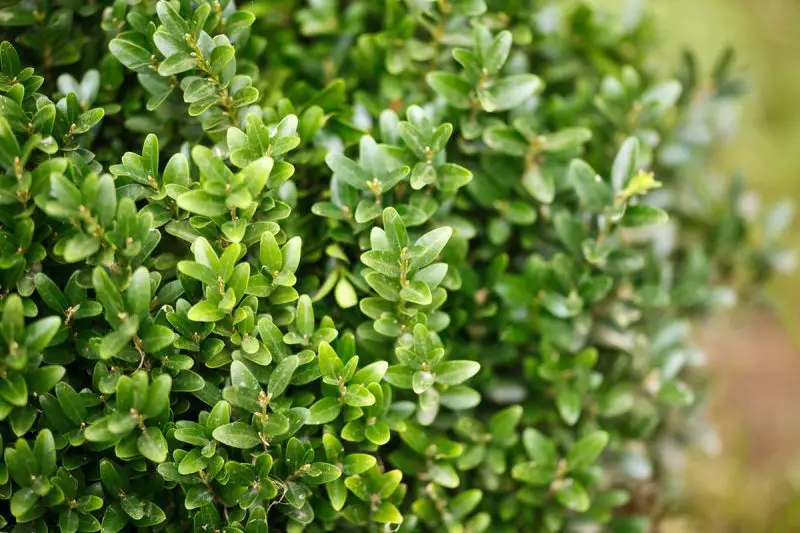Boxwood is a popular evergreen shrub known for its dense foliage and versatility. Its compact growth makes it ideal for hedges, borders, and topiary designs. Gardeners often wonder how to plant boxwood correctly to ensure healthy growth and long-lasting beauty. Understanding the basics of soil, sunlight, and watering is key to achieving a vibrant landscape.
Planting boxwood is not just about digging a hole and placing the shrub. The right preparation and care affect bloom density, shape, and overall health. Boxwood requires attention to detail in planting, pruning, and maintenance. By following proven techniques, you can cultivate a thriving hedge or ornamental shrub that enhances your garden year after year. Proper planning also minimizes common problems, such as pest infestations and root rot, ensuring the plant flourishes in any environment.
Choosing the Right Location for Boxwood

Selecting the right location is crucial for planting boxwood successfully. These shrubs thrive in areas with partial to full sun. While they can tolerate some shade, insufficient light can lead to sparse growth, weaker foliage, and uneven shape. Sun exposure helps maintain the dense, compact structure that makes boxwood ideal for hedges, borders, and topiary designs. Gardeners should also consider wind protection, as strong gusts can damage leaves and branches, especially on young plants, potentially stunting early development.
Soil conditions play an equally important role in choosing a planting site. Boxwood prefers well-draining, fertile soil with a slightly acidic to neutral pH. Heavy clay, compacted, or poorly drained areas can cause root rot, nutrient deficiencies, and slow overall growth. Preparing the soil by incorporating organic matter or compost improves drainage and provides essential nutrients. Raised beds or amended garden beds are excellent solutions in locations with challenging soil. Testing soil pH and texture helps gardeners select optimal spots for long-term success.
Spacing and garden layout are additional factors to ensure healthy growth and aesthetic appeal. Overcrowding reduces air circulation, increasing the risk of fungal diseases like boxwood blight or leaf spot. Proper spacing allows each shrub to grow to its full potential without competing for sunlight, water, or nutrients. Consider how the mature size of the plant will fit the garden design. Thoughtful site selection ensures that boxwood thrives, maintains dense foliage, and requires minimal corrective pruning. By addressing sunlight, soil, and spacing together, gardeners create a strong foundation for a vibrant, long-lasting landscape feature.
Preparing the Soil for Boxwood
Proper soil preparation is essential for boxwood to establish strong roots and thrive in the garden. The first step is testing the soil to determine pH levels and nutrient content. Boxwood prefers slightly acidic to neutral soil with a pH between 6.5 and 7.0. Amending the soil with organic matter such as compost or well-rotted manure improves fertility and encourages healthy root development. Loosening compacted soil ensures better drainage and prevents water from pooling around the roots, which can lead to rot.
Incorporating mulch or other organic amendments before planting helps retain moisture and moderates soil temperature. Adding a balanced, slow-release fertilizer at this stage provides essential nutrients to support initial growth and bloom development. Raised beds or mounds can be considered in areas with heavy clay or poor drainage, allowing roots to expand without sitting in water. Proper mixing of organic matter and soil ensures uniform texture and aeration, giving boxwood the best chance to grow vigorously.
Final preparation also involves planning the planting holes. Each hole should be twice as wide as the root ball and slightly shallower than the plant’s depth to avoid planting too deeply. This promotes proper root orientation and prevents stem rot. Removing stones, debris, or old roots from the area reduces obstacles that can impede growth. By taking the time to prepare the soil carefully, gardeners create an optimal environment where boxwood can establish quickly, develop dense foliage, and become a lasting, elegant feature in the landscape.
Planting Boxwood Step by Step
Selecting and Preparing the Plant
The first step in planting boxwood is choosing healthy, disease-free shrubs. Look for vibrant green foliage, firm stems, and a well-developed root system. Avoid plants with yellowing leaves, broken branches, or signs of pest damage. Selecting strong specimens ensures better survival and faster establishment in your garden. Consider the mature size of the boxwood to plan spacing correctly, whether you aim for a hedge, border, or topiary. Proper spacing prevents overcrowding and allows adequate airflow, reducing the risk of fungal infections.
Once selected, prepare the plant for transplanting by gently loosening the roots if they are compacted in the nursery container. This encourages outward root growth and helps the plant adapt quickly to its new location. Soaking the root ball in water for a few hours before planting ensures it is well-hydrated. During this stage, trimming any damaged or excessively long roots can further improve establishment. Proper preparation at this stage reduces transplant shock and sets the foundation for dense foliage, strong stems, and vibrant green growth in the months ahead.
Planting and Initial Care
After preparing the plant, dig a hole twice as wide as the root ball and slightly shallower than its height. Place the boxwood in the center, ensuring the top of the root ball is level with the surrounding soil. Backfill carefully with amended soil, gently pressing to remove air pockets that could dry out roots or cause instability. Adding a thin layer of compost into the backfill can provide additional nutrients to support early growth. Water thoroughly immediately after planting to settle the soil and provide essential moisture.
Mulching around the base of the plant helps retain moisture, suppress weeds, and regulate soil temperature. Keep the mulch a few inches away from the stem to prevent rot. During the first few weeks, monitor the plant closely, ensuring it receives consistent watering but avoids waterlogged soil. Light pruning of weak or damaged branches may also be beneficial. With careful planting, attentive initial care, and monitoring, boxwood establishes quickly, develops strong roots, and begins forming the dense, elegant foliage that makes it a garden favorite for years.
Sunlight and Watering Requirements for Boxwood
Sunlight Needs for Boxwood
Boxwood thrives in areas with partial to full sun. While it tolerates light shade, insufficient sunlight can lead to thin foliage, slower growth, and uneven structure. Morning sunlight is particularly beneficial, helping to dry dew and reduce the risk of fungal infections. Gardeners should consider the mature size of the shrub and surrounding structures when selecting a sunny location to ensure adequate light reaches all parts of the plant.
Different boxwood varieties may have slightly different sunlight tolerances. Some cultivars perform better in shaded areas, but even these benefit from at least three to four hours of direct sunlight daily. Proper sunlight exposure promotes strong, dense foliage and vibrant green leaves, enhancing the shrub’s overall aesthetic. Positioning boxwood thoughtfully in relation to other plants or garden features ensures it receives optimal light, leading to healthier growth, better hedge formation, and long-lasting appeal.
Watering Practices for Boxwood
Consistent and proper watering is essential for establishing boxwood and maintaining healthy growth. Newly planted shrubs require regular watering to encourage root development, typically once or twice a week depending on soil type and weather conditions. Deep watering helps roots grow downward, promoting stability and drought tolerance over time. Shallow, frequent watering should be avoided as it encourages weak, surface-level roots.
Established boxwood is relatively drought-tolerant but still benefits from supplemental watering during dry spells. Overwatering can lead to root rot, particularly in poorly drained soil, while underwatering causes stress, yellowing leaves, and reduced growth. Mulching around the base helps retain moisture and regulates soil temperature. Monitoring soil moisture, especially in summer heat, ensures the plant thrives. Combining correct watering practices with ideal sunlight conditions results in lush, dense foliage and long-lasting health for boxwood.
Fertilizing Boxwood for Optimal Growth
Providing the right nutrients is crucial for healthy boxwood growth and vibrant foliage. Applying a balanced, slow-release fertilizer in early spring helps the plant recover from winter dormancy and supports new leaf and stem development. Fertilizer formulations with equal ratios of nitrogen, phosphorus, and potassium promote overall plant health, while micronutrients like iron and magnesium enhance leaf color and prevent yellowing. Proper fertilization encourages dense, compact growth, which is especially important for hedges and topiary designs.
Timing and frequency of fertilization also influence boxwood performance. Early spring application is ideal, with a second light feeding in late summer if growth appears slow. Avoid fertilizing in late fall, as new growth stimulated by nutrients may not harden before winter, making the plant susceptible to frost damage. Organic fertilizers, such as composted manure or seaweed extract, provide additional benefits by improving soil structure and microbial activity. Using a combination of organic and slow-release fertilizers ensures continuous nutrient availability throughout the growing season.
Fertilization should always be paired with proper watering practices to maximize nutrient absorption. Dry soil can prevent roots from taking up essential nutrients, while waterlogged soil can leach them away. Applying fertilizer evenly around the root zone, avoiding direct contact with stems, prevents burning and ensures uniform growth. Regular monitoring of leaf color and plant vigor helps determine if additional feeding is necessary. With consistent and thoughtful fertilization, boxwood develops strong roots, dense foliage, and vibrant, long-lasting health, making it an enduring feature in any garden landscape.
Pruning and Shaping Boxwood
Timing and Basic Pruning Techniques
Pruning boxwood at the right time is essential for maintaining shape and encouraging healthy growth. The best period is late winter to early spring before new growth begins. Light trimming can also be done in summer to remove stray or overgrown branches. Pruning too late in the season can stimulate tender growth vulnerable to frost damage, which may harm the plant or reduce foliage density in winter. Regularly scheduled pruning helps the shrub maintain its intended size and appearance while preventing overcrowding and uneven growth patterns.
Basic pruning involves removing dead, damaged, or diseased branches first. Use sharp, clean tools to make precise cuts close to the main stem without damaging surrounding foliage. Regular light pruning encourages dense branching, giving boxwood its characteristic compact look. For formal hedges, trimming sides and tops uniformly ensures a neat, symmetrical appearance. Gardeners should also monitor the interior of the shrub, thinning occasionally to allow air and light to reach inner leaves. Consistent maintenance prevents the plant from becoming overgrown and reduces the need for heavy corrective pruning later, resulting in healthier, longer-lasting shrubs.
Shaping and Advanced Techniques
Shaping boxwood allows gardeners to create hedges, borders, and topiary forms. Start with a clear design in mind and prune gradually rather than attempting drastic changes at once. Use stakes, string lines, or templates as guides for straight edges or geometric shapes. Rounded or natural forms are easier to maintain and still provide elegance in the landscape. Gradual shaping minimizes stress on the plant and reduces the risk of cutting too much at once, which can compromise health.
Advanced techniques include thinning interior branches to improve airflow and light penetration, reducing fungal disease risk while maintaining a dense appearance. Topiary enthusiasts can train branches into curves, spirals, or specific ornamental shapes using gentle wiring and careful trimming over time. Paying attention to seasonal growth patterns ensures the boxwood retains its form throughout the year. By combining proper shaping with regular maintenance, boxwood becomes a versatile, long-lasting feature, enhancing both formal and informal garden designs with consistent beauty, structure, and health.
Mulching and Ground Care
Mulching around boxwood plays a vital role in maintaining healthy, vibrant shrubs. A 2–4 inch layer of organic mulch, such as shredded bark, leaves, or compost, helps retain soil moisture, preventing roots from drying out during hot, dry periods. Mulch also moderates soil temperature, keeping roots cooler in summer and warmer in winter. In addition, as organic mulch decomposes, it slowly releases nutrients, enriching the soil and promoting strong, dense foliage. Regularly replenishing mulch maintains these benefits and supports long-term plant health.
Ground care goes hand in hand with mulching. Keeping the area around boxwood free of weeds reduces competition for water and nutrients. Fallen leaves, twigs, and other debris should be removed promptly to prevent fungal diseases and insect infestations. Inspecting the base of the shrubs regularly allows gardeners to spot early signs of pests or rot, ensuring timely intervention. Proper ground care also includes checking for soil compaction and gently aerating if necessary to improve root growth and nutrient absorption.
In addition, mulching and attentive ground management help protect boxwood during seasonal changes. In winter, a well-mulched base shields roots from frost heaving and temperature fluctuations. During summer, mulch reduces evaporation, keeping soil consistently moist and minimizing drought stress. Combining thoughtful mulching with diligent ground care ensures boxwood develops strong roots, vibrant foliage, and a healthy, uniform structure. Over time, these practices enhance both the resilience and aesthetic appeal of your shrubs, creating a long-lasting, attractive garden feature.
Winter Care for Boxwood
Winter can be a challenging season for boxwood, particularly in regions with harsh temperatures and strong winds. Cold weather can cause leaf burn, desiccation, and damage to branches. To protect shrubs, apply a thick layer of mulch around the base to insulate the roots and maintain soil moisture. Mulching also prevents soil heaving caused by freeze-thaw cycles, which can expose roots and stress the plant. Protecting young or newly planted boxwood with burlap screens or windbreaks further reduces damage from winter winds.
Watering is also important during winter, especially in mild spells when the soil is not frozen. Boxwood can suffer from drought stress even in cold months, as wind and sun continue to draw moisture from leaves. Watering deeply but infrequently ensures the plant remains hydrated without creating waterlogged conditions that could freeze and harm the roots. Avoid fertilizing during winter, as this can stimulate tender growth that is vulnerable to frost. Maintaining consistent soil moisture and insulation sets the stage for a strong spring growth cycle.
In addition to protection, monitoring for signs of winter damage is essential. Remove any broken or frost-damaged branches promptly to prevent disease and encourage healthy regrowth. Check for signs of desiccation, especially on exposed topiary or hedge tips, and apply temporary shading if necessary. With thoughtful winter care, boxwood emerges resilient, retaining its evergreen foliage and structural beauty, ready to thrive in the following growing season. Consistent attention during the colder months ensures long-lasting health and visual appeal throughout the year.
Common Pests and Diseases Affecting Boxwood
Boxwood Leafminer
Boxwood leafminer is one of the most common pests affecting these shrubs. The larvae feed inside leaves, creating yellow blotches, blistering, and distorted foliage. While the damage rarely kills the plant, it weakens overall health and reduces aesthetic appeal. Young boxwood and newly planted shrubs are particularly vulnerable because their leaves are tender and growth is more sensitive. Severe infestations over consecutive years can lead to reduced vigor, sparser foliage, and even slower recovery after pruning. Over time, unchecked leafminer activity may make the shrub look patchy, diminishing its value as a hedge or ornamental plant.
Preventive measures include monitoring for early signs of infestation, especially in spring when adult flies lay eggs. Systemic insecticides or targeted treatments can control the larvae if detected early. Pruning affected leaves and disposing of them away from the garden helps reduce population buildup. Encouraging natural predators such as parasitic wasps can also help keep leafminer populations in check. Maintaining overall plant health through proper watering, mulching, and balanced fertilization reduces stress, making boxwood less attractive to pests. Timely and consistent action ensures the shrub maintains dense, vibrant foliage, preserves its formal structure, and continues to enhance the garden’s visual appeal for years.
Boxwood Mites and Scale
Boxwood mites and scale insects feed on leaves and stems, causing stippling, yellowing, and sticky residue on foliage. These pests thrive in hot, dry conditions and often go unnoticed until damage is severe. Infested shrubs may appear weak, with reduced leaf density, stunted growth, and uneven coloration. Long-term infestations can compromise the plant’s form, making hedges or topiaries look sparse and irregular. Some scale insects also secrete honeydew, which attracts ants and encourages sooty mold growth, further impacting the shrub’s appearance and health.
Effective control includes regular inspection and early intervention. Manual removal of affected leaves or stems can reduce populations, while introducing natural predators such as ladybugs or parasitic wasps helps maintain ecological balance. Horticultural oils or insecticidal soaps are effective treatments when applied according to instructions. Maintaining proper irrigation, mulching, and fertilization reduces plant stress, making boxwood less susceptible to infestations. Combining these strategies ensures dense, healthy foliage and preserves the aesthetic and structural integrity of the shrubs throughout the growing season.
Fungal Diseases: Blight and Root Rot
Boxwood is highly susceptible to fungal infections such as boxwood blight and root rot, which can devastate shrubs if left unmanaged. Blight causes leaf spots, defoliation, and dieback, often spreading quickly in humid or wet conditions. Root rot develops in poorly drained soils, leading to wilting, yellowing, and eventual plant death. Both diseases compromise the shrub’s aesthetic appeal and structural integrity, reducing its value as a hedge, border, or topiary. Early detection is critical to prevent extensive damage.
Preventive measures include planting in well-drained soil, spacing shrubs for adequate airflow, and promptly removing infected leaves or branches. Fungicidal treatments may be necessary for severe cases, and avoiding overhead watering reduces moisture on leaves and stems. Mulching should be applied carefully to prevent excess moisture near the base. Monitoring plant health, combined with proper site selection, sanitation, and cultural care, minimizes disease pressure. With vigilant care, gardeners can maintain dense, healthy, and visually appealing boxwood, even in climates prone to fungal infections.
Companion Plants and Garden Design
Boxwood is highly versatile and pairs beautifully with many other garden plants to create visually appealing landscapes. Low-growing plants with contrasting foliage or flowers, such as lavender, hosta, or ornamental grasses, complement boxwood’s dense green structure. Layering plants by height and texture adds depth and interest to the garden. Careful placement enhances color contrasts and helps boxwood stand out while maintaining harmony across the space.
Selecting companion plants also benefits boxwood’s microenvironment. Low plants around the base help retain soil moisture and reduce weed growth, while taller surrounding plants act as windbreaks, protecting boxwood from leaf burn and desiccation during harsh seasons. Proper spacing prevents overcrowding, which allows each plant to receive sufficient sunlight and nutrients. Strategic design ensures the health of both boxwood and its companions.
Additionally, thoughtful garden planning can highlight the unique shapes and textures of boxwood. Formal hedges, topiary, or curved borders paired with flowering plants create focal points and seasonal interest. Combining aesthetics with functionality—such as protection from wind and soil stabilization—maximizes both beauty and plant longevity. By integrating boxwood with compatible companions, gardeners achieve a balanced, thriving garden with year-round visual appeal and low-maintenance performance.
FAQ About Planting Boxwood
How often should I water my boxwood?
Boxwood prefers consistently moist but well-drained soil. Water deeply once or twice a week during dry spells. Avoid overwatering, which can cause root rot, and do not let the soil dry out completely. Proper watering ensures healthy growth, dense foliage, and strong resistance to pests and environmental stress.
When is the best time to prune boxwood?
The ideal time to prune boxwood is late winter to early spring before new growth begins. Light trimming can be done in summer to maintain shape. Avoid heavy pruning in late fall or winter, as tender new growth may be damaged by frost. Regular pruning promotes dense, compact foliage.
What type of soil is best for boxwood?
Boxwood thrives in well-drained, loose soil rich in organic matter. A slightly acidic to neutral pH between 6.5 and 7 is ideal. Amending soil with compost or organic matter before planting encourages healthy root development, dense foliage, and vibrant growth while reducing vulnerability to pests and diseases.
How can I protect boxwood from pests and diseases?
Regular inspection, proper spacing, and good air circulation help prevent infestations. Treat leafminer, mites, and scale early with horticultural oils or systemic insecticides. Remove diseased leaves promptly and mulch properly to prevent fungal infections. Healthy plants are naturally more resistant to common pests and pathogens.
What winter care is needed for boxwood?
Protect boxwood from frost, desiccation, and wind burn by applying mulch around the base and using burlap screens if necessary. Water occasionally during mild spells to prevent drought stress. Remove damaged branches in late winter, and avoid fertilizing until spring to maintain strong, resilient shrubs.
Conclusion
In conclusion, growing healthy boxwood requires careful attention to soil, watering, sunlight, and pruning. By understanding pests, diseases, and seasonal care, gardeners can maintain dense, vibrant shrubs that enhance any landscape. Thoughtful planting, companion selection, and consistent maintenance ensure year-round beauty, from structured hedges to elegant topiaries. With patience and proper techniques, boxwood thrives in all seasons, providing texture, color, and form to your garden. Whether you are a beginner or experienced gardener, mastering these practices guarantees resilient, visually stunning boxwood for years to come.






